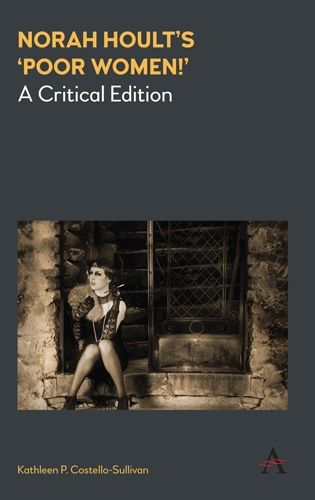Readings Newsletter
Become a Readings Member to make your shopping experience even easier.
Sign in or sign up for free!
You’re not far away from qualifying for FREE standard shipping within Australia
You’ve qualified for FREE standard shipping within Australia
The cart is loading…






Norah Hoult’s ‘Poor Women!’ A Critical Edition reintroduces a significant yet critically-neglected 20th-century Irish author. Hoult’s stories capture the restrictions imposed on women by society and its institutions. Often compared to writers such as Sean O'Faolain, Frank O'Connor, Kate O'Brien and Edna O'Brien, her work also shares characteristics with James Joyce and Mary Lavin.
Irish author (Eleanor) Norah Hoult travelled in prominent literary circles and corresponded actively with some of the leading Irish authors of the early twentieth century, including James Stephens, Brigid Brophy, Sean O'Casey and Sean O'Faolain. Despite her reputation and a forty-four year publishing career, Hoult’s oeuvre remains surprisingly neglected. Less explored is her engagement with emotional paralysis and her detailed representations of widowhood and urban settings. These similarities offer venues for further study.
$9.00 standard shipping within Australia
FREE standard shipping within Australia for orders over $100.00
Express & International shipping calculated at checkout
Norah Hoult’s ‘Poor Women!’ A Critical Edition reintroduces a significant yet critically-neglected 20th-century Irish author. Hoult’s stories capture the restrictions imposed on women by society and its institutions. Often compared to writers such as Sean O'Faolain, Frank O'Connor, Kate O'Brien and Edna O'Brien, her work also shares characteristics with James Joyce and Mary Lavin.
Irish author (Eleanor) Norah Hoult travelled in prominent literary circles and corresponded actively with some of the leading Irish authors of the early twentieth century, including James Stephens, Brigid Brophy, Sean O'Casey and Sean O'Faolain. Despite her reputation and a forty-four year publishing career, Hoult’s oeuvre remains surprisingly neglected. Less explored is her engagement with emotional paralysis and her detailed representations of widowhood and urban settings. These similarities offer venues for further study.